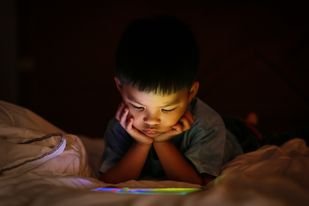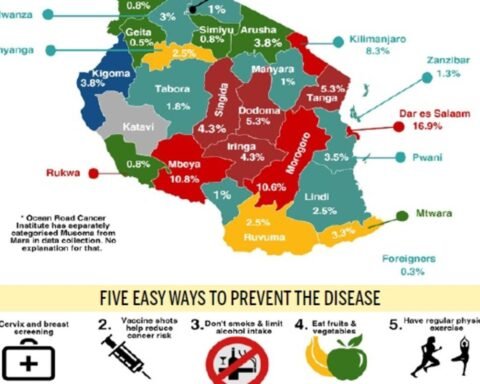Parents are being urged to rethink how their children interact with digital devices, as eye health experts raise serious concerns over the long-term impact of screen exposure on developing eyes.
A pediatric ophthalmologist has warned that allowing young children to sit too close to televisions or smartphones can have damaging consequences for their vision. The concern centers around blue light—a high-energy wavelength emitted by digital screens—which, in excessive amounts, may contribute to the early development of myopia, or nearsightedness.
“We’re seeing more kids at age six already needing glasses,” said the specialist. “This wasn’t as common in past generations. Now, the constant close-up focus on screens is altering the natural development of the eye.”
When a child’s eyes are kept in a short-distance focus for extended periods, it can cause the eyeball to elongate, reducing the ability to see objects clearly at a distance. This structural change is one of the leading causes of myopia globally and is on the rise—particularly among children who spend more time indoors with screens than outside in natural light.
In earlier times, children spent most of their free time playing outdoors—activities that naturally strengthened distance vision. Climbing trees, running, and playing games gave the eyes the chance to constantly adjust between near and far vision. Today, many children are spending that time indoors, staring at screens for hours—a habit now linked to rising vision problems.
Blue light, while naturally present in sunlight, is also emitted by LED screens on phones, tablets, and TVs. Research suggests that too much exposure to this type of light can not only contribute to eye strain and fatigue, but also disrupt melatonin production, which plays a key role in healthy sleep patterns (source).
Parents Encouraged to Act
The expert warned that many parents delay vision care for their children due to misconceptions that eyeglasses are only for elderly people or that early vision problems might self-correct over time. In reality, untreated eye conditions in children can impact academic performance, self-confidence, and overall development.
Also Read; Kuwaiti Prince’s Faith Confession Sparks Stir
“Telling a child not to wear glasses doesn’t make the problem disappear—it can actually make it worse.”
Here are a few steps parents can take:
- Use the 20-20-20 rule: Every 20 minutes, encourage your child to look at something 20 feet away for 20 seconds.
- Maintain proper screen distance: Devices should be at least 18 to 24 inches from the eyes.
- Limit screen time: Set clear screen time boundaries, especially before bedtime.
- Encourage outdoor activities: Studies show children who spend more time outdoors have a lower risk of developing myopia (source).
- Book regular eye exams: Early detection can prevent future complications.
Worldwide, experts are increasingly concerned about the sharp rise in digital eye strain, especially among school-age children who now rely heavily on devices for learning and play. In many urban areas, eye clinics are reporting more cases of vision deterioration in children as young as five.
Organizations such as the World Health Organization (WHO) and American Academy of Ophthalmology recommend integrating eye health education into school and parenting programs to combat the silent epidemic of screen-related vision damage.
In the end, experts say that protecting a child’s vision in the digital age is about balance—not banning screens entirely, but using them wisely and responsibly.
“Technology is here to stay,” the doctor noted. “But we must teach our children how to use it in a way that supports—not damages—their health.”







